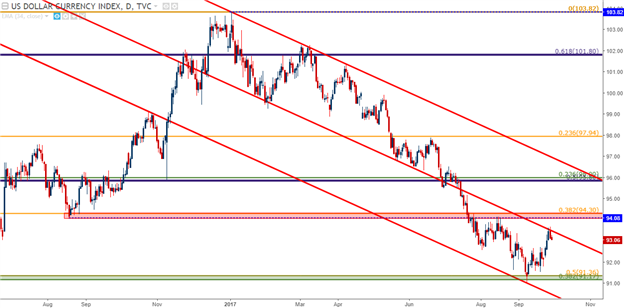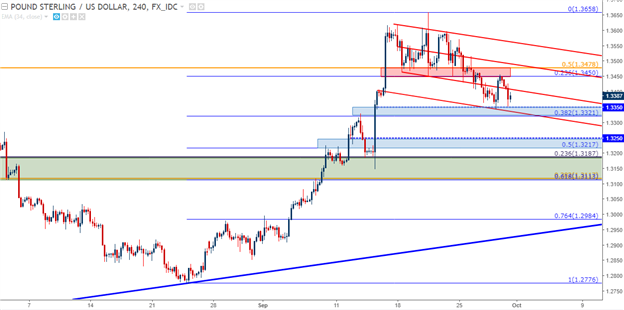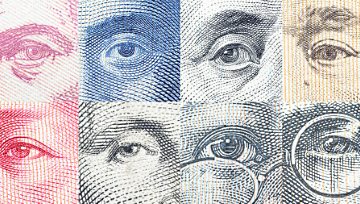Talking Points:
- As we near the close of Q3, there are numerous themes of both economic and geo-political consequence for FX traders to contend with as we move towards the end of the year.
- After years of extreme-dovish monetary policy sponsored by the world’s largest Central Banks, a shift has begun to emerge in which tightening has become a legitimate possibility in Europe and the U.K., while the Federal Reserve looks to begin reducing the size of the balance sheet.
- The start of a new quarter can be a great time to review trading plans and parameters. If you’d to learn more about risk management, please check out our Traits of Successful Traders. If you’re looking for more of an entry-level primer, please check out our New to FX guide.
To receive James Stanley’s Analysis directly via email, please sign up here.
Monday marks the beginning of the fourth quarter of the calendar year, and as we head towards the end of what’s been an eventful 2017, there are numerous themes of relevance for FX traders to contend with. The theme du jour throughout Q3 has been the topic of tightening from the world’s largest Central Banks, and this will likely remain prominently on the radar as we move through Q4. Below, we’re looking at three of the more interesting economic themes in the FX space as we move into the final quarter of 2017.
Will the ECB Start to Step Away From Stimulus?
This has been a building scenario throughout the year as markets have continually tried to get ahead of any potential move of tightening from the ECB. At the moment, the simple signal towards making policy ‘less loose’ would do the job, and that’s what we’re initially looking for out of the ECB. The bigger question is in the realm of rate hikes, and we’ll likely see expectations continuing to edge-higher should the ECB finally denote that they’re ready to begin tapering their asset purchases.
Inflation remains on an encouraging trend. Just this morning , we got inflation numbers for the month of August and headline came-in at 1.5%, which was just a tick below the 1.6% expectation. But core inflation beat the 1.2% expectation, printing at 1.3%, year-over-year. This still is not quite at the ECB’s 2% target, but given the rise in prices that’s been seen since Q4 of last year, when inflation was consistently printing below 1% annualized, it would appear that there is some continued growth taking place here.
Many have the ECB meeting in latter October (October 26) circled on their calendars for any potential announcements. The current bond buying program is set to finish off in December, and given that there are but two ECB meetings remaining until the end of the year, the prevailing thought is that the European Central Bank will give some element of clarity on their plans for asset purchases ahead of the program’s designed end date.
From a price action perspective – it was a big quarter for the Euro, with a large chunk of the currency’s gains showing up in July. After starting the quarter around fresh one-year highs above 1.1400, EUR/USD caught a significant rip throughout July to volley up towards the 1.2000’s. After a pullback into support throughout the first half of August, the pair finally took out the psychological level of 1.2000; but after that happened, bulls appeared to lose motivation with prices trading above this 1.2000 price. After failing to take out 1.2100 in early September, another retracement developed in the second half of the month, and over the past couple of days we’ve seen support show-up again in a key zone of interest as we move into Q4.
EUR/USD Daily: Support Inflection Ahead of Q4

Chart prepared by James Stanley
Fed Set to Begin Quantitative Tightening – Will the Dollar Find Any Semblance of Life?
It’s been a brutal 2017 for the U.S. Dollar. Perhaps most discouraging for Dollar bulls has been the fact that any time there has been some evidence of bottoming, bearish price action has returned to punch prices down to fresh lows. We’ve had two different periods throughout Q3 where the Dollar had appeared to try to set some longer-term support. This is likely evidence of a crowded trade with few sellers left on the sidelines, and this can make a market vulnerable to short-squeeze scenarios.
DXY spent the first three weeks of August above support, but the Jackson Hole Economic Symposium towards the end of the month drove another fresh low into the Dollar as the Euro ran up to fresh highs. And after spending the first week of September selling-off, DXY ran into a confluent support zone that has, at least so far, held-up the lows. But just as we saw in August, a lack of new negatives isn’t necessarily a direct positive – as those higher-lows in the last few weeks of the month have not been accompanied by higher-highs. We’ve seen resistance show-up below the August highs in a zone that runs from 94.08-94.30; and this keeps DXY in a bearish long-term trend.
U.S. Dollar via ‘DXY’ Daily: Bearish 2017 Trend Extends in July, Q3

Chart prepared by James Stanley
Will the Bank of England Actually Hike Rates?
While this may have been a bit unbelievable if we go back to just a few months ago, the big development at the Bank of England this quarter was the warning that rate hikes may be on the horizon. Coming into the year, and even coming into Q3 – the Bank of England remained extremely dovish in the face of rising inflation. Inflation had already eclipsed the BoE’s 2% goal for the entirety of Q2, but the bank remained so pessimistic about Brexit that the prospect of rate hikes seemed a distant possibility. Just ahead of the start of Q3, we saw three dissenting votes at the BoE after inflation for the month of May came in at 2.9%. This brought some life into a beleaguered British Pound, and throughout the quarter, prices continued-higher in a bullish manner.
After setting a low just ahead of Jackson Hole, the British Pound went on a rampage as that Bank of England rate decision in the first week of the month started to firm rate expectations after the bank warned of potential rate hikes designed to temper inflation. In quick order, GBP/USD traded above the 1.3500-level as long-term shorts gave way to fresh bullish price action.
But after running into 1.3600, a bear flag began to form as prices started to retrace. We’ve been following short-term support levels at 1.3350 and 1.3250, and thus far the 1.3350 has held up; and there is a really big zone of potential support that runs from 1.3117-1.3187. Price action above this zone continues to carry a bullish quality, while a break-below would bring upon questions for further bullish continuation. If we do break below 1.3117, look for a re-test of 1.3000 to follow.
GBP/USD Four-Hour: Bullish Burst Brought by BoE; Bull Flag Forms as Gains Digested

Chart prepared by James Stanley
--- Written by James Stanley, Strategist for DailyFX.com
To receive James Stanley’s analysis directly via email, please SIGN UP HERE
Contact and follow James on Twitter: @JStanleyFX






